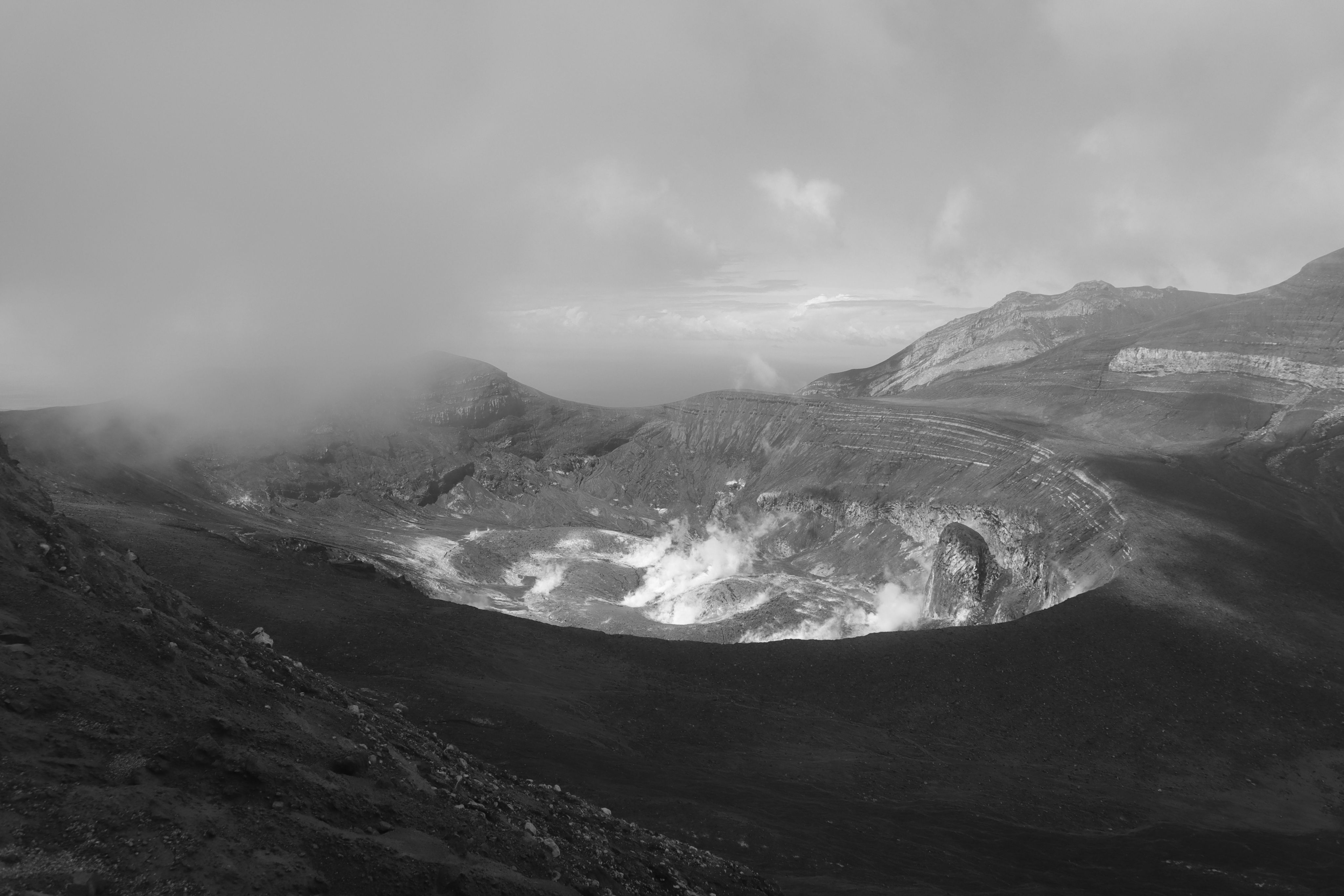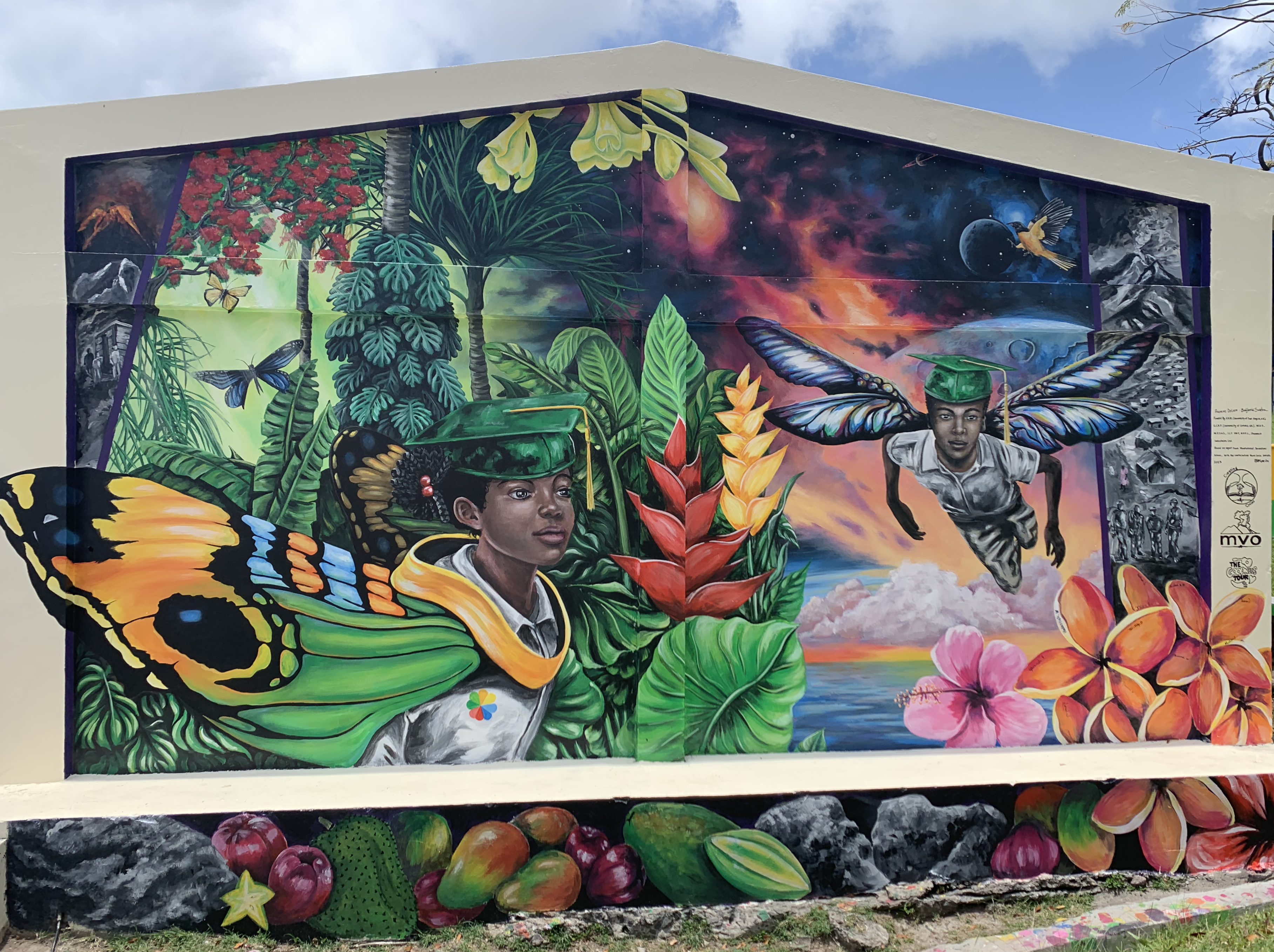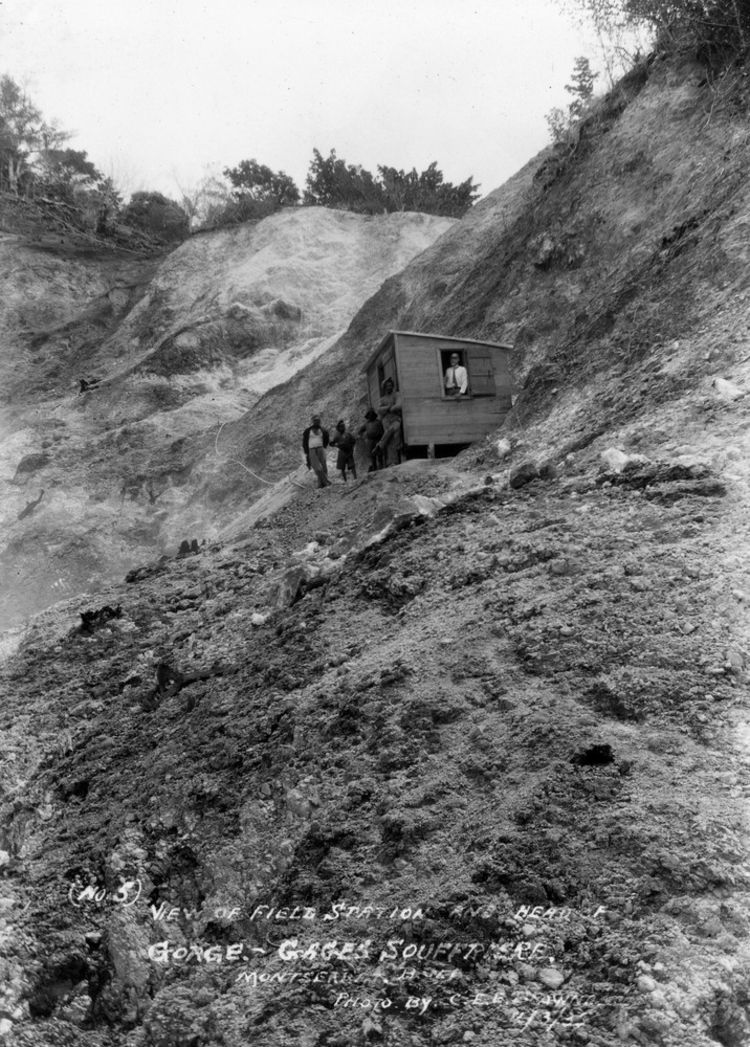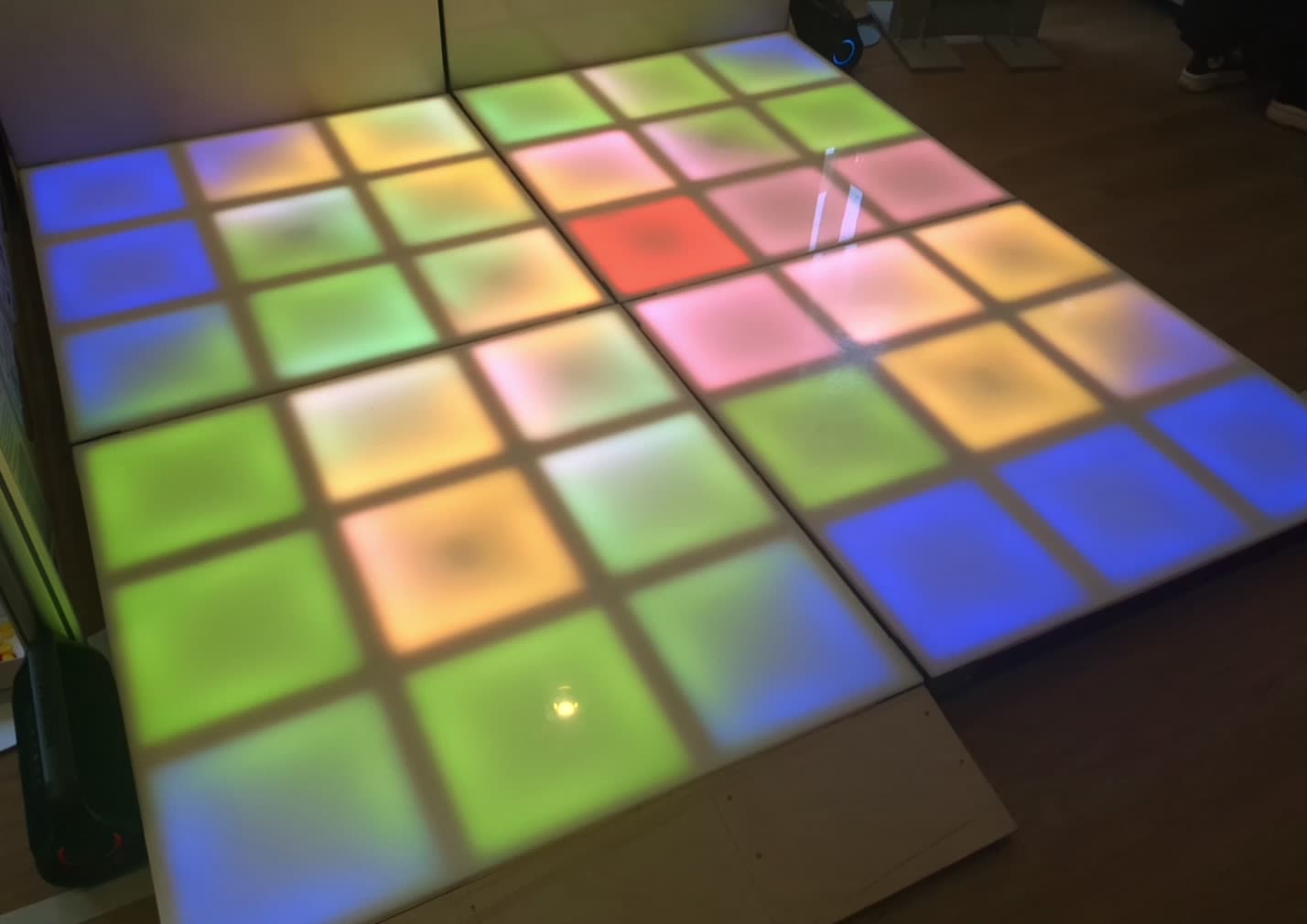Sensing Volcanoes:
a digital museum

Sensing Volcanoes is an interactive, multi-sensory exhibit at the Royal Society Summer Science Exhibition (4–9 July 2023), showcasing stories and lessons learned about observing volcanic activity and eruptions in the Caribbean over the past 150 years.
It features observers’ accounts from historical eruptions, replicas of instruments used to monitor volcanoes in the early 1900s and photos, films and interviews with communities on Montserrat and St Vincent about life in these volcanically active regions.
Over the past 12 months, the Curating Crises team - including researchers from the University of East Anglia (UEA) - has been exploring archives in the UK, US and Caribbean to unearth some of the previously hidden stories, networks, connections and structures that shaped responses to volcanic eruptions in the Caribbean.
As well as their new online archive of digitised materials, some of these stories are showcased in the Sensing Volcanoes exhibit and previewed below
Exhibit 1:
Over The River Chronicles
On 9 April 2021, the La Soufriére Volcano in St Vincent entered into an explosive phase of eruption, blanketing areas in the Red Zone in volcanic ash and tephra. Scientists at the seismic research centre provided early warning of the eruption to the authorities, allowing communities in the Red Zone to evacuate before the first explosion.
However, the impact of the eruption on infrastructure and required clean up and repair efforts resulted in long delays for communities returning home. Many months were spent living in both public and private shelters. On returning home, many found their homes had been damaged or destroyed by ash fall and powerful lahars (mixtures of ash, rock, other debris, and water) that had occurred during periods of heavy rain.
Over The River Chronicles is a series of three short films telling the lived experiences of communities in the Red Zone and the 2020-21 eruption.
The series was premiered at the Hairouna Film Festival in May 2023 and can be viewed online now.

Image: Montserrat Volcano Observatory
Image: Montserrat Volcano Observatory
Exhibit 2:
Montserrat Secondary School mural
In 1995, the Soufriére Hills volcano in Montserrat slowly buried the inhabited south of the island under tons of hot rocks and ashes. It killed at least 19 people, destroyed most of Montserrat's sources of income and increased its dependence on the UK. Two-thirds of the population was forced to exile, and the north of the island began a long struggle towards recovery.
On Montserrat, the Curating Crises project has partnered with the Montserrat Volcano Observatory in sharing research data and findings with the local population and with the decisionmakers in hopes of increasing volcanic risk awareness. The Montserrat Volcano Observatory has developed a multi-faceted community project to help achieve these objectives, while more widely benefitting Montserrat’s youth and the community in the long-term.

Davy Hill mural. Image: Montserrat Volcano Observatory
Davy Hill mural. Image: Montserrat Volcano Observatory
At the core of the community project is the establishment in January 2023 of the MVO- Montserrat Secondary School (MSS) Club, in which a group of Montserrat students - from the generation locally called the “Volcano babies” - embarked on a journey to reconnect with the history of Montserrat and learn about the past and ongoing impacts of the 1995 volcanic crises.
The students shared their vision of the island and its history with the local and international community, including the vast Montserratian diaspora, with the creation of the first community mural on the island at the Montserrat Secondary School, as well as three others across the island.

Salem City mural. Image: Montserrat Volcano Observatory
Salem City mural. Image: Montserrat Volcano Observatory
The imagery of the murals were decided by the students and by local artists and/or members of the community, who also significantly participated to the painting of the murals.
The MSS mural (above) features two students, a boy and a girl, depicted in graduation wear. As they reach for the stars, they are inspired by remembering the challenges overcome by their elders (particularly, as represented, during periods of volcanic unrest or crisis), and also finding strength in Montserrat's rich biodiversity.
Exhibit 3:
Collaboration and competition, 1902 to 1930s
We have also traced the themes of loss, rebuilding and local knowledge through the archives.
In the early 1900s, there were several major eruptions and periods of unrest in the Caribbean. Martinique and St Vincent both experienced devastating eruptions in 1902, and in the 1930s Montserrat was plagued by strong earthquakes that many were worried could be a sign that the volcano was “waking up”.
In the aftermath of the 1902 eruptions, scientists from the US and Europe flocked to the regions, all keen to make their own “discoveries for science”. Some were more concerned with being the first to reach the summit or publish a paper than understanding the eruptions and the impact on local communities beyond the financial losses incurred by the colonial establishment.
Tempest Anderson (an eye surgeon, photographer and enthusiastic volcano-hunter) and John Flett (a prominent geologist who would later direct the Geological Survey of Great Britain) travelled to St Vincent to make observations and collect witness testimony of the 1902 eruption. Their notebooks reveal careful attention paid to the observations of ordinary people but many of these are later found incorporated into official reports without attribution.
The Royal Society also sent out a series of pro-forma questionnaires to collect local observations of the eruption, but these were sent specifically to those deemed “reliable and educated” observers: the elite, white settlers of the colonial establishment.
In contrast, Frank Perret, an American electrical engineer turned volcanologist, was of the view that anyone could be a trusted observer given the right tools. In the early 1930s he sent instructions on how to construct a series of pendulums as a rudimentary seismometer to record motion from earthquakes until a more suitable instrument could be acquired. He trained local observers to make reports, which continued for years after the volcano-seismic crisis ended.
Perret spent much of his time in a hut on the slopes of the Gage’s Soufriére mountain in Montserrat (pictured right) where the volcanic vents were most active. There he measured, listened to and smelt all manner of volcanic signals, and performed public experiments in lighting up the noxious gases for his many visitors.
His time on the mountain made him quite ill. He would regularly appear on the mountainside and at government receptions in goggles designed to protect his injured eyes, and on one occasion he had to be hospitalised after an overnight stay in the hut led to serious respiratory damage. His reports suggest that his ability to detect the characteristic smells of different volcanic gases may have been quite seriously impaired through this overexposure.
Perret was much loved by the local community, partly due to the fact that he came when he was needed, in contrast to the Royal Society expedition which was severely delayed due to ongoing grumblings about whether the data being sent from Montserrat (and Perret and co) were accurate.
The construction and maintenance of Perret’s field station was a product of many people’s labour. In archival images like this, we see the faces of those who ferried materials and supplies, erected buildings, and installed, maintained and read scientific instruments.
But in most instances where such contributions were made by Black Montserratians, the archives are silent about who they were and what they did. Despite Perret’s signature approach to volcanology as a fundamentally humanitarian endeavour, like so much colonial science, it proceeded on the back of unacknowledged contributions of marginalised communities.
In the image it is Perret alone who has crossed the threshold into the scientific interior of the hut, while others stand physically and symbolically outside.
These hierarchies and divisions are still very much present in the sciences. It is our hope that by uncovering and reflecting on histories such as these, we can help make sciences like volcanology more reflective of the publics they serve.

‘View of field station and head of gorge, Gage’s Soufriére, Montserrat B.W.I.’, by C.E.E Browne, 1935. Item P536991, Archibald MacGregor Archive, British Geological Survey. Image: Natural Environment Research Council
‘View of field station and head of gorge, Gage’s Soufriére, Montserrat B.W.I.’, by C.E.E Browne, 1935. Item P536991, Archibald MacGregor Archive, British Geological Survey. Image: Natural Environment Research Council

'Refugees, Georgetown' by Tempest Anderson. Image: York Museums Trust, item TA139
'Refugees, Georgetown' by Tempest Anderson. Image: York Museums Trust, item TA139
Exhibit 4:
The fishsellers of St Vincent
Early in the morning of 7 May 1902, Mary Ann Robertson, a fishseller from Wallibou village on the western, leeward side of St Vincent, set off home from Georgetown on the windward side where she’d been selling her wares.
She followed a trail over the volcano, which dated to a time when the indigenous Carib communities were confined by the British colonial authorities to the north of the island, and were thus unable to cross from one side to the other without going via the volcanic peak.
As she reached the top, she noticed a large sulphurous crack, which she crossed on her way to the rim of the crater. Within the crater she was alarmed to see furiously boiling water. Knowing the danger that these signs suggested, she headed back to Georgetown. She began to warn others of the danger, but at the police station, the constable did not believe her.
“This tale is written about in the field notebooks of (British volcanologists) Anderson and Flett, who visited St Vincent shortly after the 1902 eruption,” explains UEA Senior Research Associate Bridie Davies, explaining that these notebooks refer to both "Mary Ann Robinson” and “Mary Ann Robertson”.
“In St Vincent in March 2023, I presented this story to a room of scientists and community members, and someone who works for the National Trust was sure the true name was Robertson, based on the distribution of family names on island at the time and her journey start and end points,” Davies continues.
"Most people in the room were convinced this was an ancestor of Richie Robertson, who was a key member of the monitoring team during the 2020-21 eruption and is very well loved on island.”
These notebooks also recount how on the previous day, three other women had noticed the boiling crater, but when they shared the news, they too faced disbelief and ridicule. They were laughed at, and the local policeman even threated to throw them in jail for giving false information and wasting police time.
It was only when a white plantation manager went up by horseback to check on things himself that the authorities began to take the threat of an eruption seriously.
Anderson and Flett gathered physical evidence of the eruption’s course, photographed its effects, and recorded the testimony of witnesses. In refugee camps set up in the eruption’s aftermath, they photographed and interviewed people like Mary Robertson, Rebecca Brown, Wilhelmina Paterson and a boy named Samson Edwards.
Edwards recalled the crater lake being a mix of red and white in colour, with a big stone in the middle surrounded by water boiling and churning like sugar cane juice in a copper pan. The big stone was most likely a small lava dome that was already sufficiently high to emerge from the lake.
Although Anderson and Flett took these stories and reports seriously, only white interviewees were named and directly acknowledged in their official reports. Nonetheless, from their archive notebooks we can learn more about how race and gender meant some people’s accounts and warnings were taken more seriously than others, with real material consequences for evacuation decisions.

Exhibit 5:
The Imaginarium
The Imaginarium is a multi-sensory, multi-media light-up floor installation designed and developed by researchers from UEA, the University of Oxford and Output Arts.
The Imaginarium is being used in public engagement activities to both challenge people to consider how they would respond to volcanic hazards, and to illustrate how scientists and communities make connections between felt signals at the surface and processes occurring deep beneath our feet in the Earth’s crust.
The Imaginarium has two modes. In game mode, it is transformed into a volcanic island made up of squares of coloured lights. Players weigh up their needs and choose a square on which to live before a volcanic crater is revealed. Players must then navigate the hazards presented in our eruption scenario and weigh up the cost of moving to avoid the hazards vs the cost of staying.
In display mode, it becomes a cross-section of the crust beneath La Soufriére in St Vincent, with coloured lights showing the evolving architecture of the magmatic plumbing system beneath the volcano during the 2020-21 eruption. The depth and intensity of earthquakes associated with magma movement and explosive eruptions are depicted through flashing lights and rumbling sound effects to help visitors make connections between the signals they may feel, see and hear at the surface, with the processes occurring in the deep earth.
The Imaginarium forms a key part of the Sensing Volcanoes exhibit at the Royal Society Summer Science exhibition and acts as a platform through which the team can share some of the stories and research they have found in the archives as well as put into practice some of the lessons learned from engagement projects on Montserrat and St Vincent.
The Royal Society's Summer Science Exhibition (4 - 9 July 2023) brings together more than 300 scientists over six inspiring days to showcase the UK’s most exciting research, from intricate robots designed to access the smallest parts of the human body, to the sights (and smells) of the cosmos.


